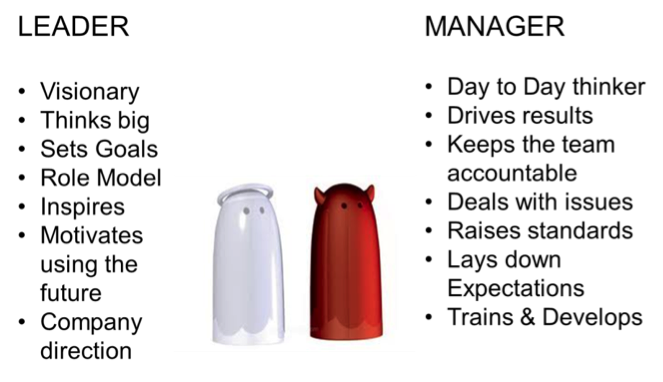 |
| OSI Model |
How many layers are in OSI model? Name them
There are seven layers of OSI model. The layers are:
1. Application layer
2. Presentation layer
3. Session layer
4. Transport layer
5. Network layer
6. Data link layer
7. Physical layer
Note: You can remember the seven layer model by a simple sentence. Please Do Not Touch Steven's Pet Alligator. See, the starting of each word forms the layer.
Why do you need to use a router?
Router can easily divide the broadcast domain and collision domain. So, to communicate among several networks, routers are used.
What is the second layer of OSI model?
Data Link layer.
Name two network devices which can work as layer 2 device.
Switch and router
What is OSI model?
OSI revers for Open System Interconnection Reference Model. It
is an abstract model for layered communications and computer network
protocol design. There are seven layers of OSI model which, from top to
bottom, are the Application, Presentation, Session, Transport, Network,
Data-Link, and Physical Layers.
OSI model also referred as OSI layered model, OIS layered technology, 7 layer model, OSI seven layer model, OSI reference model.
What is the data unit of Data Link layer?
Frame
What are the difference between TCP and UDP?
· TCP: Connection oriented protocol, acknowledged one, Point to point communication.
· UDP: Connection less protocol, unreliable, less traffic
What is the port no of DNS and Telnet?
· DNS port no: 53
· Telnet port no: 23
What is the port no of SMTP and POP3?
· SMPT port no: 25
· POP3 port no: 110
What is the functionality of network layer? Name the data unint of network layer.
· Functionality of network layer: Path determination and logical addressing
· Data unit of network layer: Packet
Which three layers of OSI model is treated as "Media Layers"?
Physical layer, data link layer and network layer are treated as "Media Layers".
What is deadlock?
Deadlock
is a situation when two or more processes are waiting indefinitely for
an event that can be caused by only one of the waiting processes. The
implementation of a semaphore with a waiting queue may result in this
situation.
Mention the advantages and disadvantages of a router.
Advantages:
· Router can limit the collision domain and broadcast domain
· Router can function both on LAN & WAN.
· Different media & architectures can be connected among themselves through router.
· Router can determine best path/route for data to reach
· the destination.
· Router can filter the broadcasts.
· For communicating different networks, routers must be used.
Disadvantage:
· Router is more expensive than any other networking devices like Hub, Bridge & Switch.
· Router only work with routable protocols.
· Routing updates consume some bandwidth.
· Increase latency due to greater degree of packet
· filtering.
· Routers function as software based and so it's slower compared to switch.
Mention the private IP address rannge of class B and C.
· For Class B: 172.16.0.0 – 172.31.255.255
· For Class C: 192.168.0.0 – 192.168.255.255
What is the IP range of class C IP address?
240.0.0.0 255.255.255.255
What is the default subnet mask of class C IP address?
255.255.255.0
Why do you need subnet mask?
Subnet mask is required to divide a large network into several small networks.
Tell the full name: DNS, FTP
· DNS: Domain Name System
· FTP: File Transfer Protocol
What is the functionality or ARP?
ARP
refers to Address Resolution Protocol. ARP is a computer networking
protocol for determining a network host's link layer or hardware address
when only its Internet Layer (IP) or Network Layer address is known.
Which one is reliable: TCP or UDP?
TCP is reliable and UDP is an unreliable service.
How DHCP works?
DHCP works by four-steps: (1) IP request, (2) IP offer (3) IP selection and (d) Acknowledgement.
What is POP3? Why you require POP3?
POP
stands for Post Office Protocol. This is used to describe how e-mail
clients interact with mail servers. The POP3 Server is a type of mail
server used for incoming mail. POP is only used to receive messages.
What is the difference between Layer 2 Switch and Layer 3 Switch?
Layer
2 switch is based on MAC addresses which operates on Data Link Layer of
OSI mode. And Layer 3 switching is based on network topology table
populated and works on Network layer.
Cheat Chart: Some common terms
· ARP: Address Resolution Protocol
· DNS: Domain Name System
· FTP: File Transfer Protocol
· HTTP: Hypertext Transfer Protocol
· IP: Internet Protocol
· NNTP: Network News Transfer Protocol
· POP3: Post Office Protocol 3
· PPP: Point-to-Point Protocol
· SMPP: Short Message Peer-to-Peer
· SMTP: Simple Mail Transfer Protocol
· TCP: Transmission Control Protocol
· UDP: User Datagram Protocol
Cheat Chart: OSI layers
OSI reference model has seven layers:
· Application layer
· Presentation layer
· Session layer
· Transport layer
· Network layer
· Data link layer
· Physical layer
Cheat Chart: OSI layers functionality
· Application layer: Network process to application
· Presentation layer: Data representation and encryption
· Session layer: Interhost communication
· Transport layer: End-to-end connections and reliability
· Network layer: Path determination and logical addressing
· Data link layer: Physical addressing
· Physical layer: Media, signal and binary transmission
Cheat Chart: TCP/IP reference model
TCP/IP reference model has four layers:
· Application
· Transport
· Internet
· Network Access
Cheat Chart: Data Units of OSI layers
· Application layer...........Data
· Presentation layer.........Data
· Session layer.................Data
· Transport layer..............Segment
· Network layer................Packet
· Data link layer...............Frame
· Physical layer................Bit
Chear Chart: Default Port Numbers
Service Port No.
· FTP -------- 20,21
· SSH -------- 22
· telnet -------- 23
· SMTP -------- 25
· DNS -------- 53
· DHCP -------- 67,68
· TFTP -------- 69
· HTTP -------- 80
· POP3 -------- 110
· NNTP -------- 119
· NTP -------- 123
· IMAP4 -------- 143
· LDAP -------- 389
· HTTPS -------- 443
· IMAPS -------- 993
· RADIUS-------- 1812
· AIM -------- 5190
Cheat Chart: Public IP address ranges
Every
computer in the Internet has an IP address. There are five types of IP
address. In the following table, you will find all the classes of IP
address and the class name:
Class Start address Finish Address
· A 0.0.0.0 127.255.255.255
· B 128.0.0.0 191.255.255.255
· C 192.0.0.0 223.255.255.255
· D 224.0.0.0 239.255.255.255
· E 240.0.0.0 255.255.255.255
Cheat chart: Default subnet mask
In the following section, you will see the default subnet mask of each class:
· For Class A: 255.0.0.0
· For Class B: 255.255.0.0
· For Class C: 255.255.255.0
Cheat Chart: Private IP address ranges
Public
IP address is not so much. That's why the concept of private IP arises.
In the following, you will find all the private IP address ranges of
all classes.
· For Class A: 10.0.0.0 – 10.255.255.255
· For Class B: 172.16.0.0 – 172.31.255.255
· For Class C: 192.168.0.0 – 192.168.255.255
Cheat Chart: Host layers and media layers
· Host layers:
The upper four layers are known as Host layers. The layers of host
layers includes : Application layer, Presentation layer, Session layer
and Transport layer.
· Media layers:
The lower three layers are known as Media layers. The layers of media
layers are : Network layer, Data link layer and Physical layer.
HSRP:
Hot Standby Routing Protocol, a proprietary protocol from Cisco. HSRP is
a routing protocol that provides backup to a router in the event of
failure. Using HSRP, several routers are connected to the same segment
of an Ethernet, FDDI or token-ring network and work together to present
the appearance of a single virtual router on the LAN. The routers share
the same IP and MAC addresses, therefore in the event of failure of one
router, the hosts on the LAN are able to continue forwarding packets to a
consistent IP and MAC address. The process of transferring the routing
responsibilities from one device to another is transparent to the user.
VRRP :
Virtual Router Redundancy Protocol, an election protocol that
dynamically assigns responsibility for one or more virtual router(s) to
the VRRP router(s) on a LAN, allowing several routers on a multiaccess
link to utilize the same virtual IP address. A VRRP router is configured
to run the VRRP protocol in conjunction with one or more other routers
attached to a LAN. In a VRRP setup, one router is elected as the master
router with the other routers acting as backups in case of the failure
of the master route



























